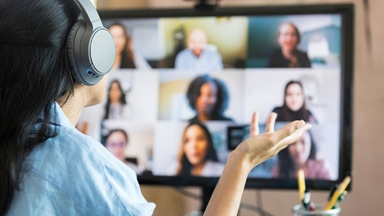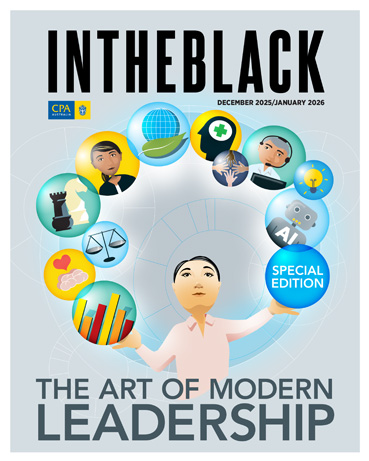Loading component...
At a glance
Five years after the COVID-19 pandemic created remote workforces virtually overnight, video conferencing has become a part of everyday life.
For Dr Paddy Ross, an associate professor in psychology at Durham University, the sharp rise in videoconferencing triggered by the pandemic presented an opportunity for him and his team.
“We quickly realised this was quite a new way for people to be communicating, and in several situations, even meeting for the first time,” Ross says.
“The novelty of this communication method meant that the potential effect of background on first impressions was unknown at the time.”
Ross and his colleagues embarked on a new research project investigating how digital backgrounds influence the way people perceive each other during Zoom and Microsoft Teams meetings.
To blur or not to blur
In the study, participants were shown a range of faces — male or female, with either smiling or neutral expressions — placed in front of six different backgrounds: living room, house plants, bookcase, blurred living room, novelty and blank wall. The participants were then asked to rate the faces on their trustworthiness or competence.
Ross and his colleagues found that plants and bookcases significantly raised ratings of perceived trust and competence.
They also found that blurred backgrounds increased ratings of trust and competence compared to an unblurred living room backdrop, a finding Ross says was surprising.
“We had predicted the opposite — that blurring would in fact lower trust and competence ratings due to the background being hidden from the viewer.”
Conversely, novelty backgrounds scored low in ratings of trust and competence. “I’d recommend avoiding them when interacting with people you haven’t met,” Ross says.
Ross — who uses a green screen that allows him to create customised backgrounds for different audiences — says he was surprised that backgrounds had such a profound effect on people’s perception of others.
“We never mentioned the backgrounds to participants, only asked them to rate the people, but yet their first impressions of really important traits were affected significantly by the backgrounds they used.”
The implications of getting it wrong
Ross says his research has particular significance for recruitment. The major implication, and where first impressions arguably make the most difference, is in interview scenarios.
“Moving interviews online has massively reduced costs and allows organisations to interview people worldwide,” Ross says.
In job interviews, first impressions matter.
“It could be the difference between getting the job or not, as first impressions have been shown to be very hard to shake once you’ve made them,” he says.
In a video call, the digital environment makes a statement about your character and values.
“Your background is like the new business suit — something which says something about you, and how much effort and care you’ve put into your ‘appearance’,” Ross says.
Stick to the basics
Of course, it takes more than a bookshelf or a blurred background to make a positive first impression.
Ross’s research found that “happy faces” scored higher than neutral expressions on trust and competence.
Leah Mether, a communications specialist, says the lack of visual cues can make it much harder to interpret body language during a video meeting.
“When you’re Zooming from home a lot of the time, you are relaxed, which is great, but sometimes relaxed can come across as bored and disinterested, particularly if you’re also not focused on the camera or you’re looking at your emails at the same time.”
Mether recommends bringing a little bit extra to video meetings.
“This doesn’t mean you’re bouncing off the walls, but it does mean you sit up straight and use hand gestures, if that’s normal for you, and make sure you’re looking at the camera when you can.”
One trick to elevate your presence is to stand, if possible. “If I’m running a meeting, I’ll do it standing up because it changes my energy straight away,” Mether says.
She acknowledges that it can be hard not to tune out during video meetings.
“One of the most common frustrations I hear from people across all industries is how unproductive their meetings are, and a lot of the time it’s because people aren’t showing up and being present,” she says.
She recommends taking the same approach and care to video meetings as professionals would in in-person meetings — turn the camera on and avoid checking emails or looking at other devices like a smartphone.
“Just because you’ve got a screen in the way, doesn’t mean all of the rules go out the window,” she says.
Mether — who is agnostic about backgrounds — generally opts for a clutter-free office or sits at her kitchen bench during video calls.
But she notes, “it doesn’t matter how great your background is — if you’re distracted and not present on the video call, it becomes irrelevant.”

